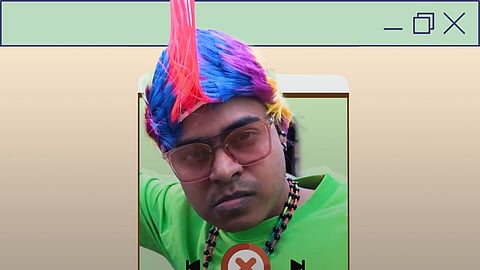
In the liberal imagination, there are supposedly pardonable and unpardonable forms of oppression. Only rapes, lynchings, and caste killings are irredeemable sins. It's as though oppression can only be inflicted through blood and gore. Casual sexism, Islamophobia, or casteist humour are just mistakes, mere slips-of-tongue. Let's call this the “Oops, I just used the N-word, but I’m not a racist” phenomenon.
A recent video titled Porki Man, created by Kannada social media influencer Vikas, known online as Vickypedia, is yet another example of how privileged groups create and celebrate content that ridicules marginalised or vulnerable communities, often using words and expressions that have their origins in caste.
The video shows a “porki man”—a young man with a cigarette between his lips, wearing a brightly coloured T-shirt and “tight pant-u,” bling, “branded cooling glasses,” a brightly coloured mohawk, and using a cheap, “China-set” phone. In his imagination, this is what a local thug looks like. He is a man who takes money from his girlfriend while flirting with other women and who is a menace on the streets, performing wheelies on his two-wheeler.
The video, uploaded on January 9, gained significant traction, amassing over 1.8 million views, 130k likes, and 52.6k shares on Instagram alone.
Intended as a “joke”, the term porki has its origins in a caste-based occupation, like many other words and expressions that denote undesirable qualities, poor taste, “low class,” or “dirtiness.” The term is a slur referring to communities engaged in garbage disposal.
While the entire concept of the video stems from casteist prejudice, the visual aesthetics weaponise the cultural expression of urban subaltern groups against them, associating a certain style of dressing and appearance with moral and social inferiority.
Casteism as ‘humour’
While many viewers found the video amusing, the comment section revealed an ignorance about the term porki itself. Some viewers, unaware of its casteist origins, “corrected” the creator by suggesting he meant “chapri,” another slur tied to caste biases. When TNM reached out to some of these users, they admitted they were unaware of the casteist connotations of both terms. However, even after learning about their origins, they expressed no intention to delete their comments or stop using the terms.